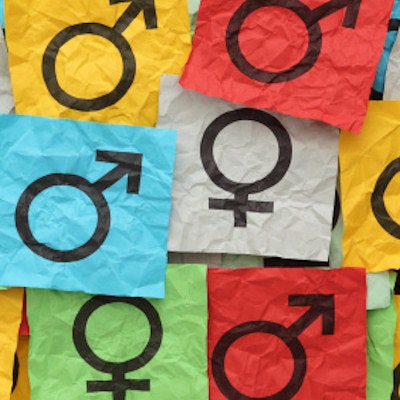
As a specialty, radiology has historically had low rates of sexual harassment. But that doesn't mean the problem is resolved, according to a study published online April 28 in the Journal of the American College of Radiology.
Researchers from Johns Hopkins in Baltimore found that 10% of radiologists have experienced sexual harassment -- with women making up almost a quarter of these individuals. And sexual harassment isn't limited to stereotypical relationship hierarchies, wrote a team led by Dr. Aline Camargo: Victims may be the harasser's supervisor, coworker, or subordinate, and the harasser may or may not be of the opposite gender.
What does appear in most cases is an abuse of professional or social power.
"Studies have shown that harassers usually find in their gender, race, and class positions power that 'justifies' their abusive behavior," the group wrote.
Persistent problem
Previous research has shown a low rate of sexual harassment in radiology compared to other specialties, which this research confirmed, Camargo and colleagues wrote. But the study results still suggest that the problem of sexual harassment remains and must be addressed.
 Dr. Aline Camargo from Johns Hopkins Medicine.
Dr. Aline Camargo from Johns Hopkins Medicine."We believe that our findings may reflect a dangerous culture in which women in particular learn they should accept and tolerate this kind of behavior -- such as flirtation or inappropriate sexual compliments or comments," Camargo told AuntMinnie.com. "Victims or witnesses must be encouraged to report, but for that to happen, they must feel they will be heard, not judged, and the abuser will be punished."
To gauge the prevalence of sexual harassment in radiology and to investigate whether its victims report their experiences, the researchers emailed an ethics and sexual harassment questionnaire to 1,569 radiologists and radiology trainees between September and October 2016. The link to the survey was also posted on Facebook, Twitter, Instagram, AuntMinnie.com, and on the American College of Radiology (ACR) and RSNA blogs.
Camargo and colleagues defined sexual harassment according to the U.S. Equal Employment Opportunity Commission standard, which states that "unwelcome sexual advances, requests for sexual favors, and other verbal or physical conduct of a sexual nature constitute sexual harassment in the workplace when this conduct explicitly or implicitly affects the individual's employment, unreasonably interferes with an individual's work performance, or creates an intimidating, hostile, or offensive work environment."
The group received 401 responses. Of these survey participants, 10% had experienced sexual harassment, with more female (24.4%) than male victims (4.4%). Female survey participants were seven times more likely to have experienced sexual harassment, the researchers found.
In addition, almost a third of respondents (28.7%) had witnessed sexual harassment, with the rate increasing with age. With each 10-year age increase, there was a 50% increase in the odds of observing sexual harassment. Female survey respondents were two times more likely to witness sexual harassment than male respondents.
Male survey respondents were more likely than female respondents to report sexual harassment, at 62% versus 51.1%, based on responses to the question "If you were a victim of sexual harassment, would you report it?" Of the survey respondents who had experienced sexual harassment, 29.4% said they would likely report the incident. U.S. medical school graduates were less likely than those outside of the U.S. to report these kinds of episodes (54.1% compared to 77.1%), Camargo and colleagues found.
Although women were more likely to witness and experience sexual harassment, they were less likely to report it. That surprised the researchers.
"We would hope that if a person witnesses and/or is a victim of sexual harassment, (s)he would be more likely to report the case, and not the opposite," Camargo said. "We believe that such findings may reflect a dangerous culture in which women learn they should accept and tolerate this kind of behavior. Besides that fact, the victims -- women or men -- may feel that reporting the case will be ineffective or even bring negative outcomes to their personal and professional lives."
Safe reporting
Workplace culture must be safe enough so that victims or observers of sexual harassment will report it, according to Camargo.
"It's essential that the workplace offers an anonymous, nonjudgmental environment in order to welcome, protect, and respect the victims, and there must be strict policies in every workplace where abusers are punished, so that reporting is seen as effective," she said. "We also suggest training and education about what sexual harassment is and what to do to report it."
In any case, radiology is not impervious to the problem of sexual harassment, Camargo concluded.
"We are not immune, despite the higher level of education of the professionals in our field," she said. "One might think, 'That could never happen in my environment' -- both the sexual harassment and the lack of reporting -- but it does."




















